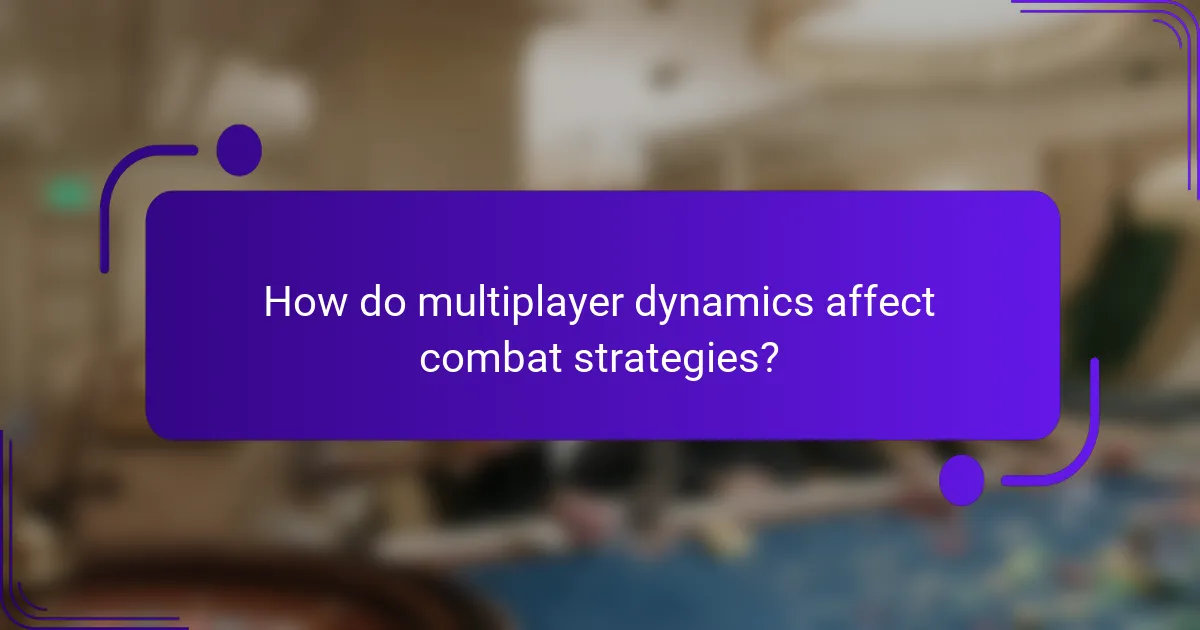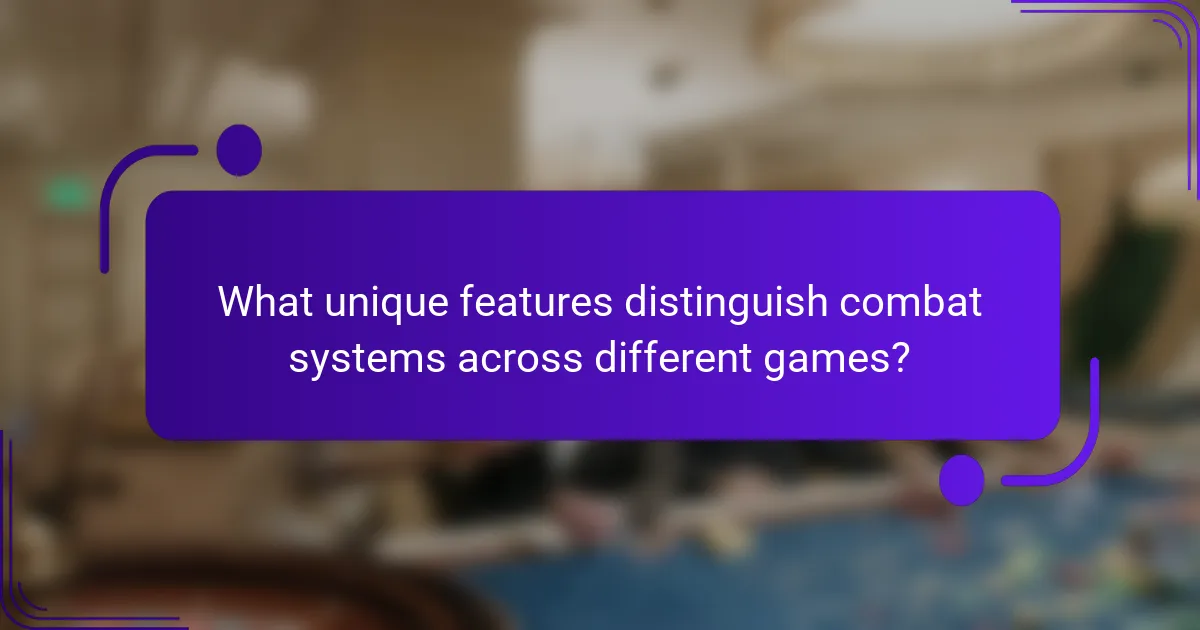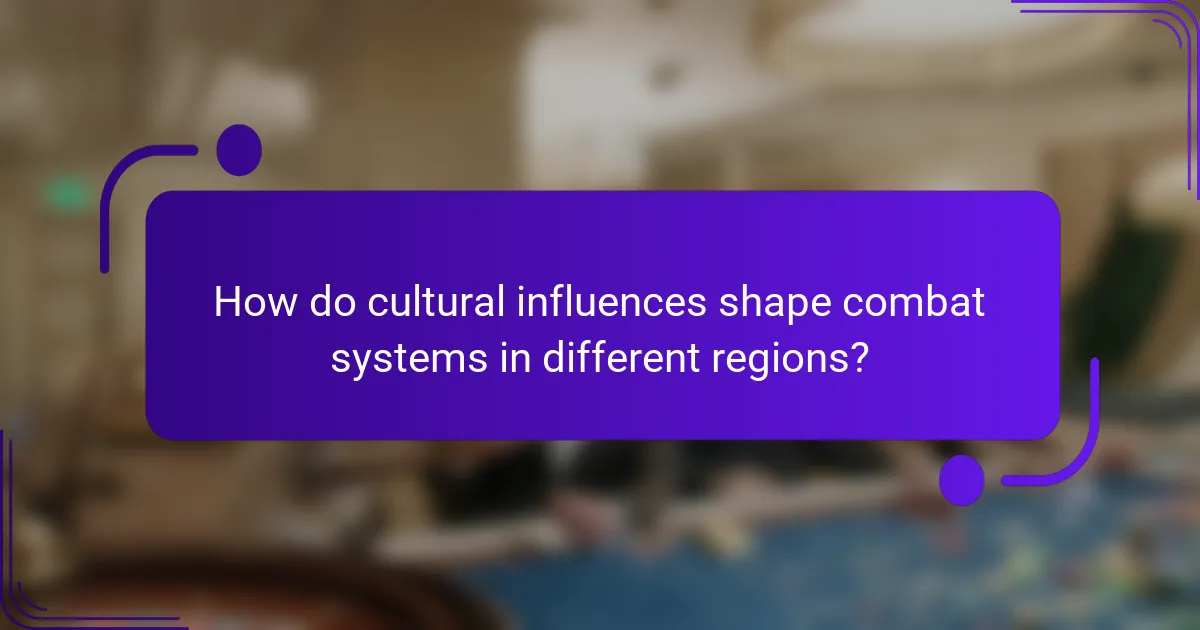Combat systems in multiplayer fantasy adventure games are vital for engaging gameplay, presenting challenges in strategy and teamwork. Key mechanics include real-time combat, class-based abilities, and environmental interactions. Cultural influences shape these systems, enhancing player immersion. Understanding common pitfalls is essential for creating balanced and enjoyable combat experiences.

What are the core mechanics of combat systems in multiplayer fantasy adventure games?
Combat systems in multiplayer fantasy adventure games typically involve real-time mechanics, class-based abilities, and strategic teamwork. Players engage in dynamic battles, utilising character skills and environmental elements to gain an advantage.
Key mechanics include attack patterns, defence strategies, and resource management. Players often have unique attributes, such as health points and mana, which influence combat effectiveness. Coordination among players enhances the combat experience, allowing for tactical maneuvers and combo attacks.
Additionally, combat systems may feature rare attributes like environmental interactions or special events that can alter the course of battle. These elements contribute to a rich and immersive gameplay experience, encouraging players to adapt and evolve their strategies.
How do player abilities influence combat effectiveness?
Player abilities significantly influence combat effectiveness by determining damage output, defence, and tactical options. Each ability affects how players engage with enemies and utilise strategies. For example, a high agility stat can enhance dodging capabilities, while a powerful attack ability may increase damage dealt.
Unique abilities can create synergies within teams, allowing for strategic combinations that amplify overall effectiveness. Rare abilities, such as crowd control or healing, can turn the tide in critical moments, showcasing the importance of diverse skill sets in combat scenarios.
Overall, the interplay between player abilities and combat dynamics shapes the experience, making it essential for players to understand and optimise their character’s strengths.
Which types of combat styles are prevalent in these games?
Combat systems in multiplayer fantasy adventure games often include melee combat, ranged combat, magic-based combat, and hybrid systems. Melee combat emphasises close-range physical attacks, while ranged combat focuses on distance attacks using bows or firearms. Magic-based combat utilises spells for offensive and defensive strategies. Hybrid systems combine elements of melee, ranged, and magic for versatile gameplay. Each style offers unique strategies and gameplay experiences, catering to different player preferences.
What role do environmental factors play in combat scenarios?
Environmental factors significantly influence combat scenarios in multiplayer fantasy adventure games by affecting visibility, terrain, and player strategy. Weather conditions like rain or fog can obscure sightlines, impacting ranged combat effectiveness. Terrain types, such as mountains or forests, can provide tactical advantages or disadvantages, shaping movement and positioning. Additionally, environmental hazards like lava or traps can alter gameplay dynamics, forcing players to adapt their strategies. These factors create a more immersive experience, requiring players to consider their surroundings actively.

How do multiplayer dynamics affect combat strategies?
Multiplayer dynamics significantly influence combat strategies by promoting teamwork, adaptability, and diverse roles. Players must coordinate their actions, leveraging unique character abilities to overcome challenges. This collaboration enhances strategic depth, as players can combine strengths for effective damage output and defence. Additionally, real-time communication allows for quick adjustments based on opponents’ tactics, creating a dynamic battlefield. Understanding these interactions is essential for mastering combat systems in multiplayer fantasy adventure games.
What are the challenges of team-based combat in these games?
Team-based combat in multiplayer fantasy adventure games faces several challenges. Coordination among players is essential but often difficult due to varying communication styles. Diverse character abilities can lead to imbalances, making teamwork crucial yet complicated. Additionally, the unpredictability of opponents can disrupt strategies, causing confusion during battles. Lastly, lag and technical issues can hinder performance, affecting the overall experience.
How does player communication enhance combat performance?
Effective player communication significantly enhances combat performance by fostering coordination and strategy. Clear communication allows players to share vital information, such as enemy locations and health status, leading to better tactical decisions. Additionally, players can synchronise their attacks and defences, maximising their collective damage output while minimising vulnerabilities. This synergy ultimately results in improved outcomes during challenging encounters, showcasing the importance of teamwork in multiplayer fantasy adventure games.
Which roles do players typically assume in combat encounters?
Players typically assume roles such as tank, damage dealer, and support in combat encounters. Each role has distinct responsibilities that contribute to team success.
Tanks absorb damage and protect teammates, ensuring they can execute their strategies. Damage dealers focus on maximising output to defeat enemies quickly. Support roles provide healing, buffs, or crowd control, enhancing the team’s effectiveness.
These roles create a balanced dynamic, allowing for strategic gameplay and cooperation. Understanding these roles helps players optimise their contributions in multiplayer fantasy adventure games.

What unique features distinguish combat systems across different games?
Combat systems in multiplayer fantasy adventure games are distinguished by unique mechanics, player interaction, and strategic depth. Key features include real-time combat versus turn-based systems, skill trees that allow character customisation, and cooperative versus competitive play dynamics.
Real-time combat systems emphasise reflexes and timing, while turn-based systems focus on strategy and planning. Skill trees offer players the ability to specialise in certain abilities, impacting gameplay styles. Additionally, cooperative play encourages teamwork, whereas competitive modes foster rivalry among players.
Another unique feature is the integration of environmental elements, which can affect combat dynamics. For instance, some games allow players to use the environment for tactical advantages, such as hiding or setting traps.
Lastly, the presence of unique abilities tied to character classes adds depth, as each class may have distinct combat roles, influencing team composition and strategy.
How do game mechanics evolve with player progression?
Game mechanics evolve with player progression by introducing complexity and depth. As players advance, combat systems often add new abilities, skills, and strategies that enhance gameplay.
Initially, players may rely on basic attacks and simple mechanics. As they progress, they unlock advanced techniques, such as combo systems and special moves, which require timing and precision. This evolution keeps gameplay engaging and challenges players to adapt their strategies.
Moreover, multiplayer dynamics shift as players develop unique roles within teams. Some may specialise in damage dealing, while others focus on support or tanking. This diversification enriches combat systems and promotes teamwork.
Finally, player progression often leads to the introduction of rare items or abilities that can significantly alter combat effectiveness. These unique attributes not only reward dedication but also encourage exploration and experimentation within the game world.
What innovative combat systems have emerged in recent titles?
Innovative combat systems in recent multiplayer fantasy adventure games emphasise dynamic interactions and player creativity. Games like “Elden Ring” and “Genshin Impact” feature fluid combat mechanics, integrating real-time strategy with traditional RPG elements.
“Monster Hunter Rise” introduced a unique wirebug system, allowing players to traverse environments and engage enemies in novel ways. “Final Fantasy XIV” has expanded its job system, offering diverse playstyles that cater to different combat strategies.
Additionally, the “Dark Souls” series continues to innovate with its stamina-based combat, requiring players to balance offence and defence. These advancements enhance player engagement and create immersive combat experiences.

How do cultural influences shape combat systems in different regions?
Cultural influences significantly shape combat systems in multiplayer fantasy adventure games by integrating regional aesthetics, fighting styles, and narrative elements. For instance, Eastern cultures often emphasise martial arts and honour, while Western influences may focus on brute strength and strategy.
Combat systems reflect the mythology and folklore of different regions, impacting character abilities and weapon choices. In Japanese-inspired games, samurai and ninja archetypes dominate, showcasing unique techniques and philosophies. In contrast, European settings may highlight knights and mages, emphasising chivalry and magic.
The diversity in combat mechanics can also be attributed to cultural values. For example, cooperative gameplay is more prevalent in cultures that prioritise community, while competitive systems may thrive in individualistic societies. This diversity enriches player experiences and enhances immersion through culturally resonant gameplay.
Ultimately, the interplay between culture and combat systems creates a rich tapestry that influences player engagement and satisfaction.
What are the most popular combat systems in North American fantasy games?
The most popular combat systems in North American fantasy games include action-based, turn-based, and hybrid systems. Action-based systems emphasise real-time combat, allowing players to execute attacks and dodge in fluid motion. Turn-based systems focus on strategic decision-making, where players take turns to plan their moves. Hybrid systems combine elements of both, offering a balance between strategy and action. Each system caters to different player preferences and enhances the gaming experience through unique mechanics and gameplay dynamics.
How do European players engage with combat mechanics differently?
European players often prioritise strategic teamwork and tactical approaches in combat mechanics. They engage more deeply with character roles and synergy, focusing on group dynamics over individual prowess. This collaborative style enhances gameplay experiences, fostering a sense of community. Additionally, European players frequently utilise environmental elements, leveraging terrain and obstacles to gain advantages in battles. This contrasts with more aggressive playstyles seen in other regions, emphasising a blend of strategy and adaptability.

What are the common pitfalls in implementing combat systems?
Common pitfalls in implementing combat systems include lack of balance, poor feedback mechanisms, inadequate testing, and complexity. These issues can lead to player frustration and diminished enjoyment.
Lack of balance occurs when certain characters or abilities dominate gameplay, making it unfair. Poor feedback mechanisms can result in players not understanding the impact of their actions. Inadequate testing often leads to unaddressed bugs and imbalances. Lastly, complexity can overwhelm players, hindering their ability to engage with the system effectively.
Addressing these pitfalls requires careful design, thorough testing, and ongoing player feedback to create a rewarding combat experience.
How can developers balance combat to maintain player engagement?
Developers can balance combat in multiplayer fantasy adventure games by implementing varied mechanics, engaging feedback systems, and scalable difficulty. Diverse combat styles keep players invested, while responsive feedback enhances the gaming experience. Gradually increasing challenge levels ensures ongoing engagement without overwhelming players.
What are the best practices for testing combat systems?
Effective testing of combat systems in multiplayer fantasy adventure games includes balancing mechanics, ensuring responsiveness, and optimising performance. Focus on playtesting with diverse player groups to gather varied feedback. Analyse combat interactions for clarity and fairness, adjusting attributes like damage output and cooldowns. Utilise automated testing tools to simulate different scenarios and identify bugs efficiently. Regularly update the system based on player engagement metrics to maintain a dynamic and enjoyable experience.
What strategies can enhance player satisfaction in combat scenarios?
Enhancing player satisfaction in combat scenarios requires a focus on engagement, balance, and feedback. Implementing dynamic combat mechanics can keep players invested. Balancing character abilities ensures fairness, promoting enjoyment. Providing clear feedback through visual and auditory cues enhances the overall experience. Additionally, incorporating cooperative elements fosters teamwork, enriching player interactions.